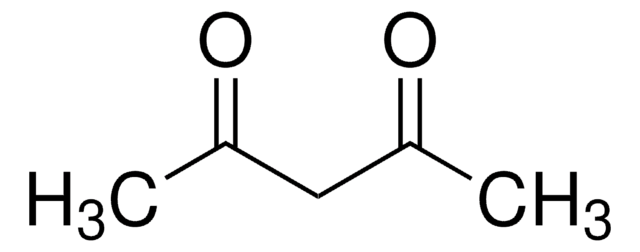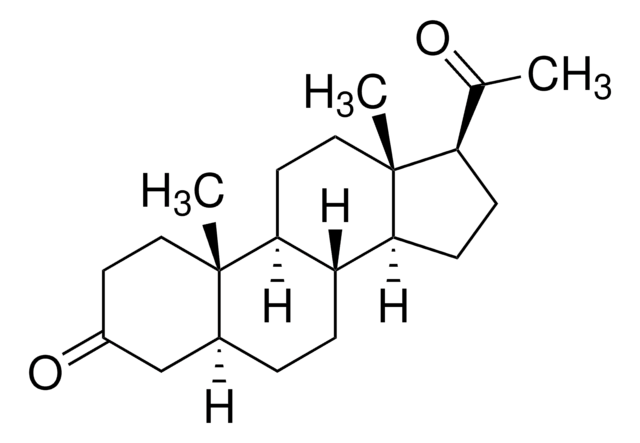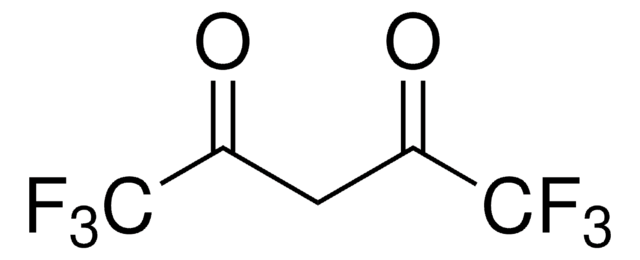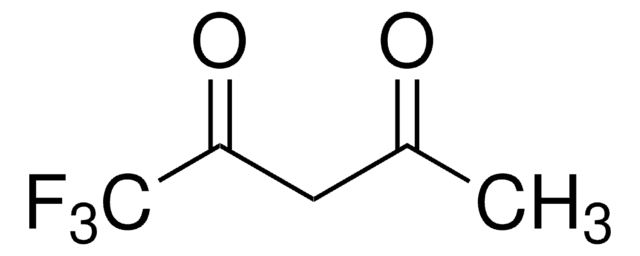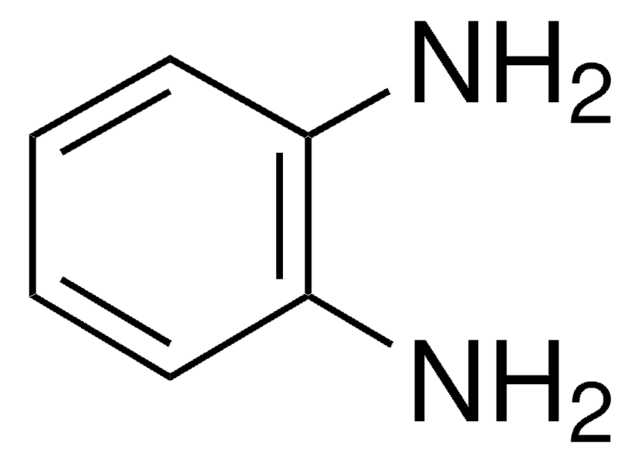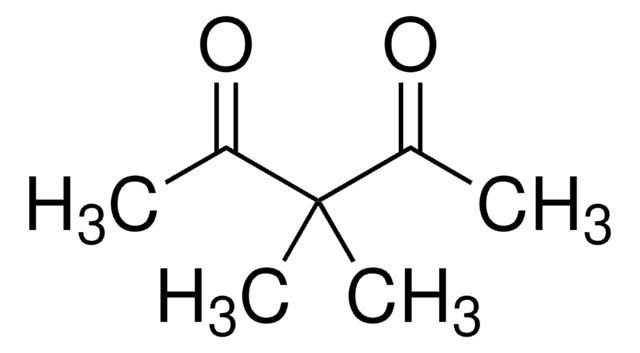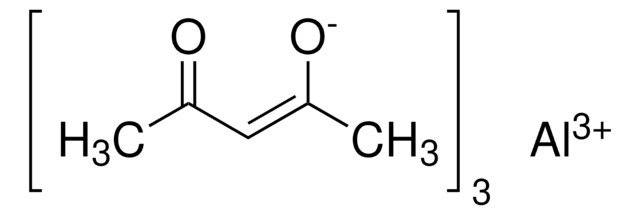P7754
Acetilacetona
ReagentPlus®, ≥99%
Sinónimos:
2,4-Pentanodiona
About This Item
Productos recomendados
vapor density
3.5 (vs air)
Quality Level
vapor pressure
6 mmHg ( 20 °C)
product line
ReagentPlus®
assay
≥99%
form
liquid
autoignition temp.
662 °F
expl. lim.
11.4 %
refractive index
n20/D 1.452 (lit.)
pH
6 (20 °C, 200 g/L)
bp
140.4 °C (lit.)
mp
−23 °C (lit.)
density
0.975 g/mL at 25 °C (lit.)
SMILES string
CC(=O)CC(C)=O
InChI
1S/C5H8O2/c1-4(6)3-5(2)7/h3H2,1-2H3
InChI key
YRKCREAYFQTBPV-UHFFFAOYSA-N
Gene Information
human ... ACHE(43) , BCHE(590) , CES1(1066)
¿Está buscando productos similares? Visita Guía de comparación de productos
General description
Application
- A multifunctional ligand in the synthesis and feasible functionalization of gold nanoparticles (AuNPs).
- A reactant to synthesize 9,10-dihydroacridines by reacting with methyl acetoacetate and Morita-Baylis-Hillman acetates.
- A reagent in the synthesis of ZrO2(zirconium dioxide) via hydrolysis of Zr(OC3H7n)4. Acetylacetone controls the hydrolysis and condensation rates of alkoxides and thus, the nucleation and growth rates of oxides.
Packaging
Legal Information
signalword
Danger
hcodes
Hazard Classifications
Acute Tox. 3 Dermal - Acute Tox. 3 Inhalation - Acute Tox. 4 Oral - Flam. Liq. 3
Storage Class
3 - Flammable liquids
wgk_germany
WGK 1
flash_point_f
95.0 °F - closed cup
flash_point_c
35 °C - closed cup
Elija entre una de las versiones más recientes:
¿Ya tiene este producto?
Encuentre la documentación para los productos que ha comprado recientemente en la Biblioteca de documentos.
Los clientes también vieron
Nuestro equipo de científicos tiene experiencia en todas las áreas de investigación: Ciencias de la vida, Ciencia de los materiales, Síntesis química, Cromatografía, Analítica y muchas otras.
Póngase en contacto con el Servicio técnico